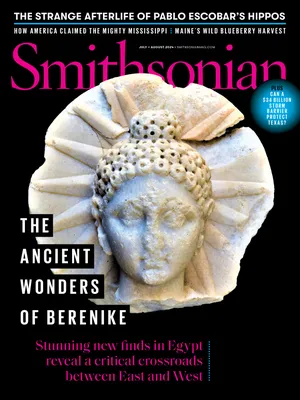The First Tango in Paris Made a Stir Worth Remembering
As breaking makes its debut at this summer’s Olympics, take a look back more than a century when another dance rocked the City of Lights
:focal(3563x2240:3564x2241)/https://tf-cmsv2-smithsonianmag-media.s3.amazonaws.com/filer_public/87/33/8733c738-9ed4-4702-a1ad-aea7adb348ca/bal_653229.jpg)
When the International Olympic Committee announced the 2024 Paris Games would include breaking for the first time, not all athletes danced with joy. Indeed, some considered these street stylings to be an expression of anarchy: Michelle Martin, an Australian who dominated international squash in the 1990s, said the move would make “a mockery” of these noble competitions.
The flap brings to mind another curious Parisian panic around a new, upstart dance competition—one that, more than a century ago, agitated everyone from nobility to church elders. The rebellious dance was called the tango, and it originated in the brothels and streets of Buenos Aires in the late 1800s. Though the Argentine upper classes associated the tango with violence and illicit sex, their more rakish sons encountered it in downtown cafés and dance halls and carried it abroad during their obligatory European travels.
When the tango arrived in Paris, in the early 1900s, it created a sensation. “The chests are touching, and the legs are going in between each other’s legs,” says Mark Knowles, author of The Wicked Waltz and Other Scandalous Dances. “And that’s very suggestive and naughty.” According to Gabriel-Louis Pringué, a chronicler of Parisian society, the evocative moves led one French countess to remark, “Don’t you have to be lying down to dance that?”
Despite or perhaps because of its bawdiness, the tango soon caught on in working-class clubs in the Montmartre section of Paris, where handsome men offered lessons to swooning young women, helping launch the craze.
Dance impresario Camille de Rhynal wanted to take the tango to London, but knew it was too risqué for the Brits. So in 1907, he and the Grand Duchess Anastasia Mikhailovna of Russia “experimented with the tango to take away its naughtier, more objectionable features, so it could be presented in a ballroom,” Knowles says. That same year, de Rhynal created the first tango championship at the Imperial Country Club in Nice; the events quickly spread to Paris, leading to Tangomania in cities across Europe and in New York.
But powerful skeptics remained. In 1913, Pope Pius X declared the tango immoral and off-limits to Catholics, and the archbishop of Paris, Cardinal Amette, banned tango teachers from the city. Today, the critics have come around: For instance, Pope Francis fondly recalls dancing the tango as a young man in Argentina. As breakers make their Olympic debut amid some controversy, perhaps they can take solace in the enduring truth that today’s scandal is often tomorrow’s respectable pursuit.
